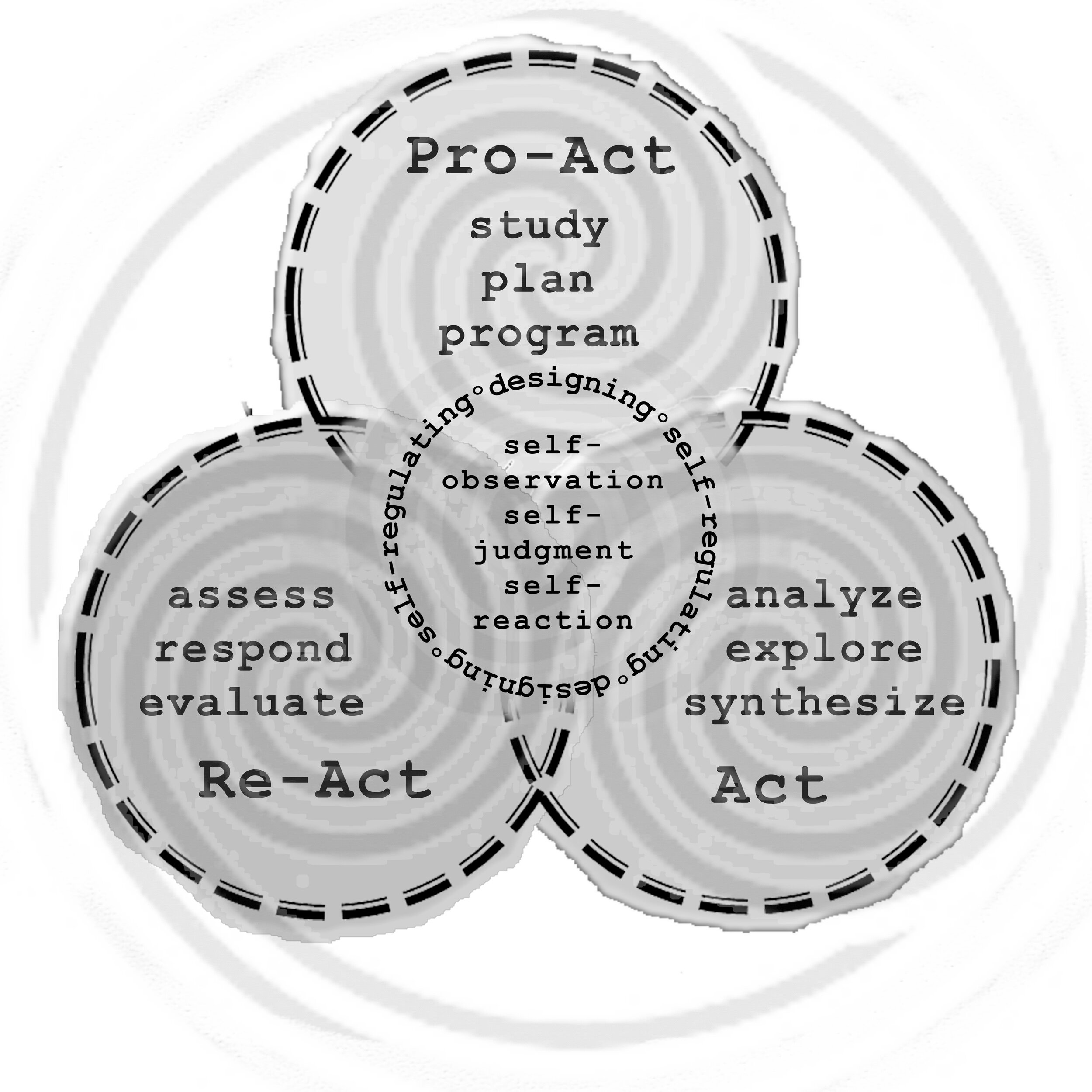How SRDL Works?
SRDL works by using prior knowledge as a basis for differentiating each student’s design project in meaningful and relevant ways. Design learners then use internal cognitive processes like metacognition to monitor, assess, and adjust their thinking and behavior to achieve their goals. The social-cognitive studio environment provides design learners with additional goal-based feedback to help them track their progress. SRDL helps teachers and learners structure projects to support remediation, risk-taking, and excellence with greater confidence and meaning.
SRDL: Learning Process
The SRDL learning process is comprised of three interdependent and reoccurring phases including: (1) pro-act, (2) act, and (3) re-act. The phases are nonlinear. Learners cycle through them based on factors like goals and level of self-regulation.
The SRDL learning process helps design educators: (1) describe learning and performance at specific points in the learning process; (2) operationalize important behaviors and effective strategies; (3) adapt feedback relative to student progress; and (4) tailor future instruction to each student.



